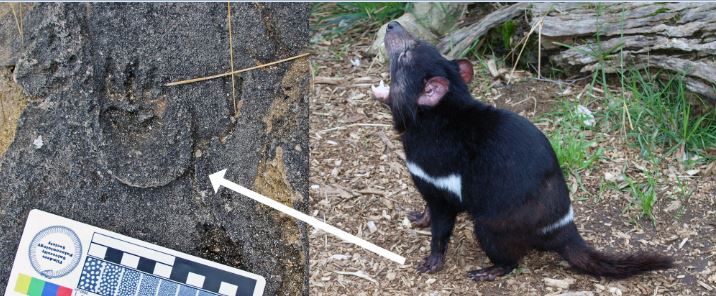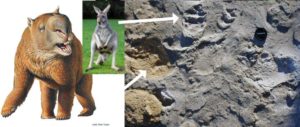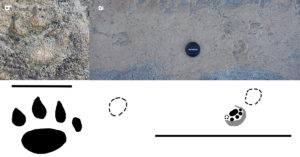

In this not-too-distant prehistoric past, when giant megafauna and flightless birds, Tasmanian tigers and devils roamed around Kangaroo Island, their footprints left trails for scientists to track in the future.
Fast forward more than 140,000 years and extensive studies of Australia’s southern coastlines have led to the discovery of one of the most diverse sites for such fossil trackways from the late Pleistocene era.

The trace fossil site on a secluded beach on the southern Dudley Peninsula on Kangaroo Island in South Australia has given Flinders University palaeontologist Dr Aaron Camens and other researchers reason to call for moves to protect such sites.
“Australian fossil vertebrate trackways are extremely rare and this project was the first of its kind in Australia,” says Dr Camens, a lecturer in palaeontologist who is part of a team which has studied more than 6,500km of coastline from Victoria to Western Australia.
“We’ve got the so-called ‘Jurassic Park’ in Western Australia and other dinosaur footprints in Queensland, and now we’re discovering important Pleistocene vertebrate megafauna tracksites in southern Australia,” Dr Camens says.
“On Kangaroo Island, we discovered a trace fossil site preserving hundreds of individual traces made by several extinct animals including thylacines (or ‘Tassie tigers’), large quadrupeds (most probably diprotodontids), short-faced (sthenurine) kangaroos – along with possums, the Tasmanian devil, goannas, shorebirds and a variety of kangaroos.
More than 300 individual vertebrate traces were found, 260 of which were measured. They include more than 10 different reptile, bird and mammal taxa, as well as invertebrates.
Diprotodon optatum, one of the megafauna found at the location, stood about 2m tall at the shoulder and weighed more than two tonnes.
“This site can provide important information about the Island’s prehistoric wildlife, its distribution and behaviour, to support and contrast with skeletal fossil discoveries.”
“In fact, the data collected during this six-year project will both to inform us of behavioural, anatomical and locomotory characteristics not preserved by skeletal fossils, and provide new palaeo-ecological information regarding the extinct Australian megafauna.”
Federation University geologist Dr Stephen Carey and University of Adelaide Quaternary Scientist Dr Lee Arnold also worked on data from the Kangaroo Island site, after Kangaroo Island residents alerted the scientists to the site in 2011.
Casts of many of these trace fossils have been taken and are forming the basis for description of ichnotaxa (taxa described from the fossil footprints they left behind).
Cutting-edge computer software is being used for three dimensional modelling of trackways, in many cases resulting in the creation of a permanent 3D record of the traces where no cast could be taken.
Preliminary dating from several of the sites suggests that the trace fossil assemblages span a significant period of time, the youngest being only around 20,000 years old, and the oldest being at least 200,000.
Federation University geologist Dr Stephen Carey and University of Adelaide Quaternary Scientist Dr Lee Arnold also worked on data from the Kangaroo Island site, after Kangaroo Island residents alerted the scientists to the site in 2011.
Dr Camens says the imprints found on Bridgewater Formation outcrops on Kangaroo Island were made in the previous interglacial period when the sea level was similar to today’s levels – when the island was isolated from the mainland – and in the intervening periods it was connected to the mainland.
“This gives us a view of which animals were coexisting in coastal ecosystems before the island became separated from the mainland, and before the disappearance of much of Australia’s megafauna,” Dr Camens says.
“It also represents the tip of the iceberg in terms of the potential the trace fossil record has for informing us about the past distribution of Australia’s fascinating megafauna.
“Many more sites have been discovered along Australia’s southern coast and these will be published in the near future.”

